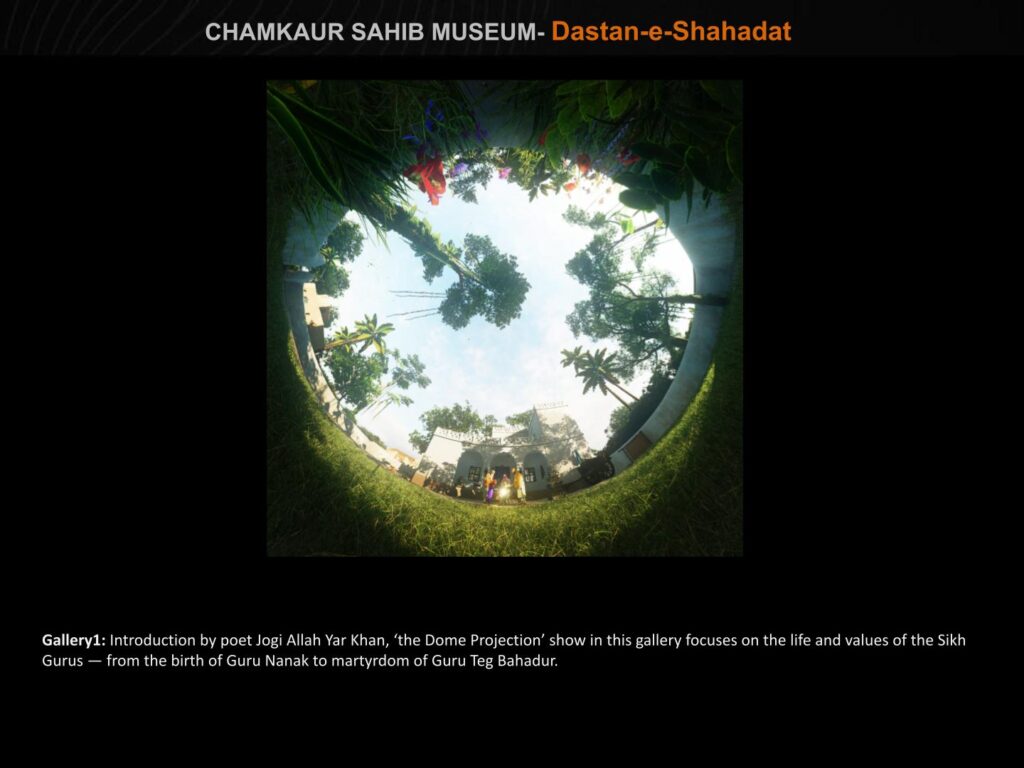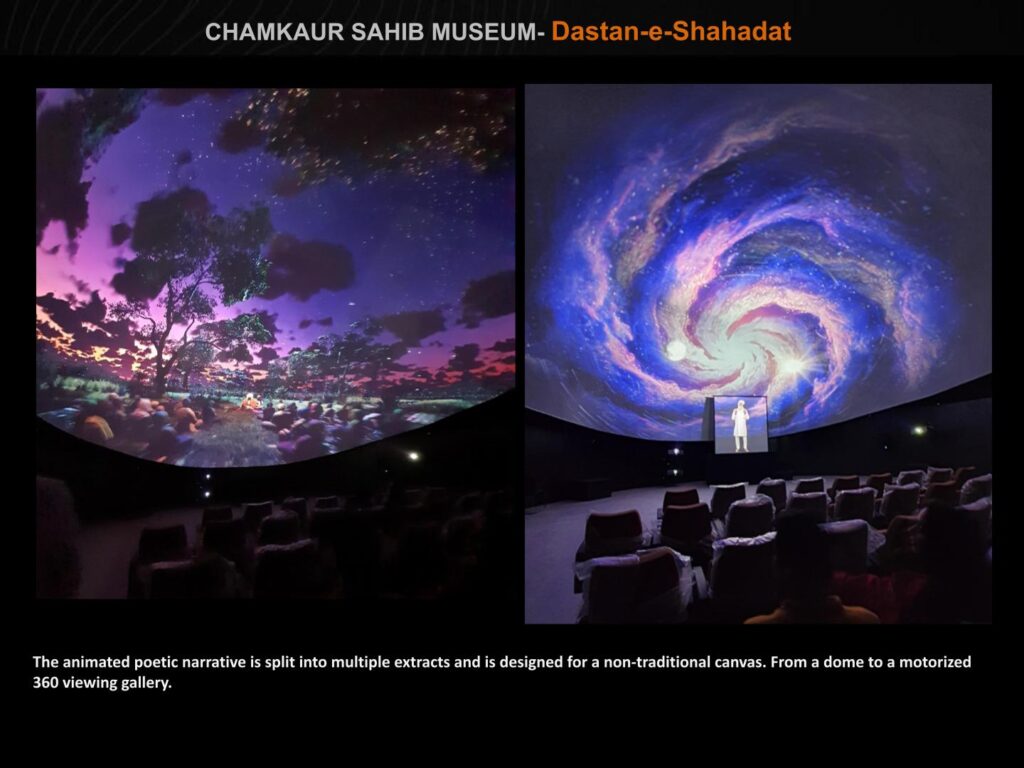Delhi-based Charuvi Design Labs (CDL) recently created an anthology of three animated films Dastaan-e-Shahadat which depicts the life, teachings, and sacrifice of Guru Gobind Singh. CDL in association with the Punjab Government produced this 70 minutes feature which was first screened at the inaugural of ‘Dastaan-e-Shahadat’ museum.
AnimationXpress got in touch with Charuvi Design Labs founder and CEO Charuvi Agrawal to know more in detail about the making of the animated poetic narrative that is split into multiple extracts and is designed for a non-traditional canvas; from a dome to a motorised 360 viewing gallery. The first film is for a gallery with Dome Projection. The story focuses on the life and values of the Sikh Gurus — from the birth of Guru Nanak to the martyrdom of Guru Teg Bahadur.
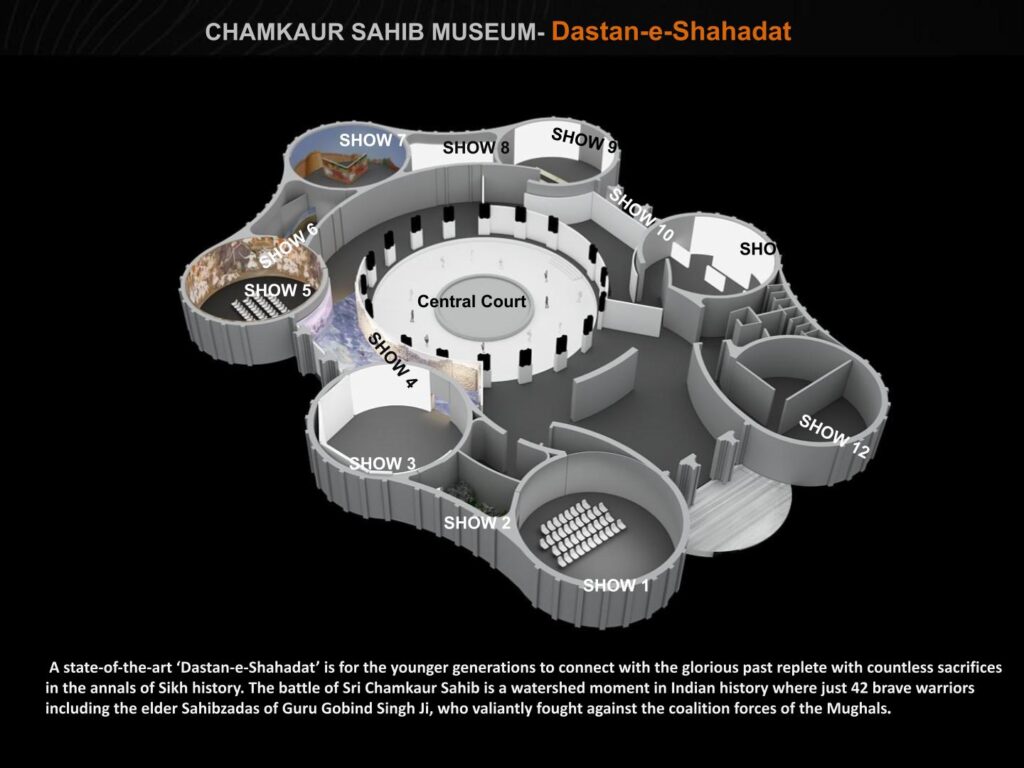
About 20 artists worked on this project and the film was created using Unreal Engine. Talking about the making of film using Unreal Engine, Agrawal said, “We were exploring Unreal Engine for a few projects since 2018 and with the kind of complexity and timeline in hand for Dastaan-e-Shahadat, the tool seemed the best solution, both technically and creatively. The production of the film followed a hybrid pipeline where various departments were merged. The pre-production followed the traditional route where we first initiated research, post which pre-production of characters/environments/props were created. Simultaneously we figured out the production pipeline and resolved technical challenges with cameras and their physical calibration with projectors on-site. An animation and asset library was created which was imported into Unreal Engine. As per rough animatics, we laid out our shots in Unreal and progressively started developing them.”

She further added, “Real-time filmmaking has been a great liberator. Seeing your environments, shots and direction in real-time enables quick creative decisions along with enhancing the content far more. I feel we have barely scratched the surface. The potential is tremendous.”
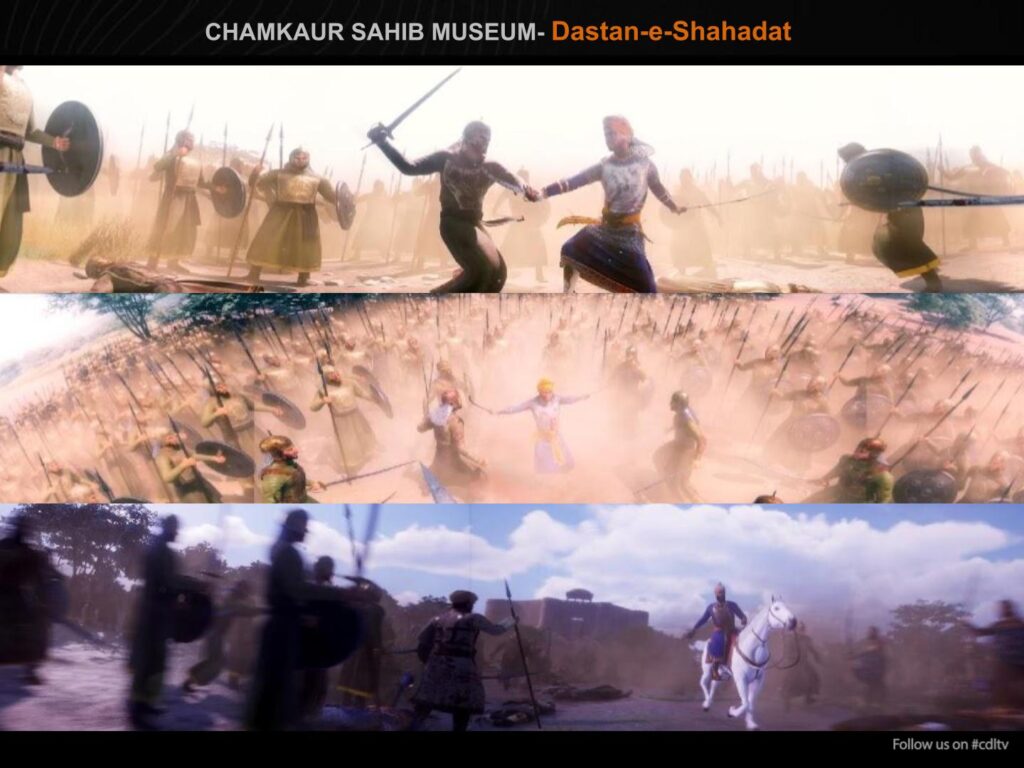
The project was started in 2020 and it took 14 long months to complete the film in the middle of the pandemic. The second film is a 270-degree mapping show that encapsulates the epic tale of Guru Gobind Singh from the time of his Guruship till he encounters Mughals and fights against forced conversions to protect his Sikh identity and faith. It covers the birth of Khalsa and that of his four saahibzaadas (sons) and ends in sadness with ‘Parivaar Vichoda’ (when Guru’s family was separated from each other). Sharing the overall experience, she mentioned, “Overall it was pleasantly challenging. Making a film for various types of screens, be it a ceiling dome or a 180-degree curved screen has very different nuances. Also, the music was brilliant with some outstanding known artists singing beautiful melodies. To marry that with the visuals was another really fun challenge. Many of our artists were able to come up with novel solutions and did a great job. It took time but then such projects always make us think very differently.”
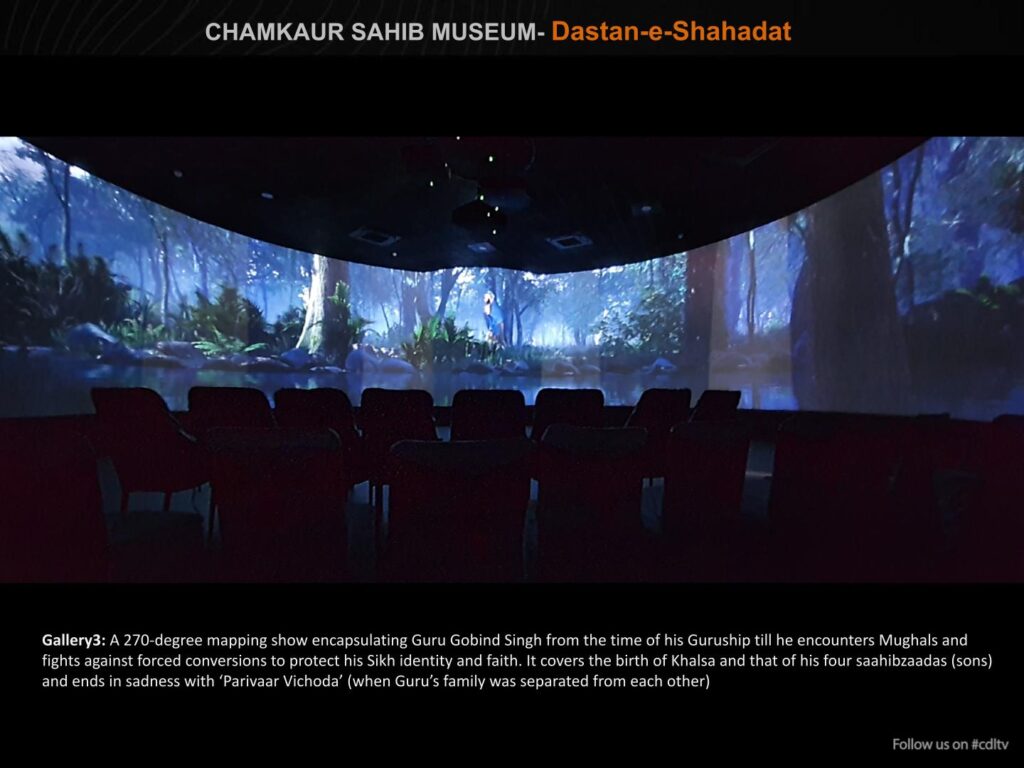
The third film features a 360-degree show which narrates the extraordinary battle of Chamkaur fought between a Mughal army of lakhs and Guru Gobind Singh’s army of 42 Sikhs including his two elder sons. Sikhs ultimately attained martyrdom but battled hard.
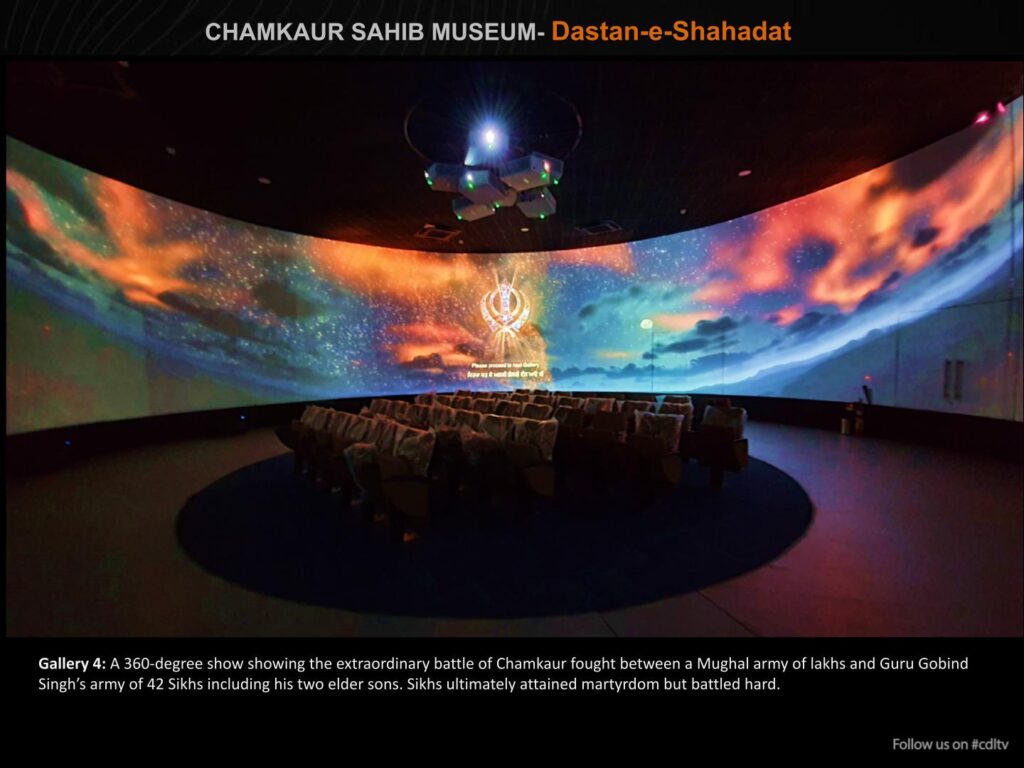
Describing the major challenges faced while coming up with this film, Agrawal mentioned, “We were commissioned to create three films constituting 70 minutes, wherein each film had a different canvas. With each screen being of different dimensions, shapes, and depths, each film needed to be made like a specialty experiential film.”
Agrawal gave an in-depth insight into the making of the project:
Format of the films
One of the films had to be directed and produced for 270 degrees, the other was 360 degrees in nature for a spherical dome. The third film was a physical avatar of virtual reality content where the viewers are seated on a turntable and the hero of the content moves across the wall and so does the audience move with the hero. Stitching the rendered output from four to six cameras was quite a task for the team.
Research and time
Historical films require great in-depth research in regards to clothing, weaponry, war tactics, fort architecture, the landscape of that era in order to remain true to the epic rendition. The team dwelled into various historical texts, visited museums, and actual sites to retrieve data so that authentic translation in 3D could be done but time was the biggest challenge.
Iterations and quick turnarounds
Considering the religious sentiments and historical facts, a lot of iterations were expected during the production.
Dynamic battle shots
From a director’s point of view, the platform allowed the team to direct and produce complicated intense shots in a span of a few months which previously would have taken us years just to execute.
Large landscapes
It was a challenge to create various environments in a short amount of time, be it a forest, a valley, or a river. Pre-production, proper action planning, and creating a huge library made it possible to create environments on a large scale using mega scan assets.
Simulations
The scenes were dynamic in nature with large physical simulations and effects. Various blueprints and testing were done to get fire, sand, blood, etc creatively well integrated into the shots.
Commenting about CDL’s association with the Punjab Government, she added, “Our association was that of a director and production firm. We focused on creating an engaging narrative as per the screen and the historical facts followed by the whole production of the films. Compliments to the Punjab Government for being so passionate and involved in the project. It was certainly very personal for each and every member, including the CM himself. Many of them spent hundreds of hours per week in coordination, edits, and finding solutions to challenges. It was indeed fabulous working with them.”
Revealing about the future plans and current projects, Agrawal shared, “We are currently working on multiple pilots for a spectrum of content aimed at children, teenagers, and adults. Consequently, we are also working on our own IP and shall be ready to go to market with that by the end of the year. Our museum’s short films and shows continue, while we are also working on some art projects.”

